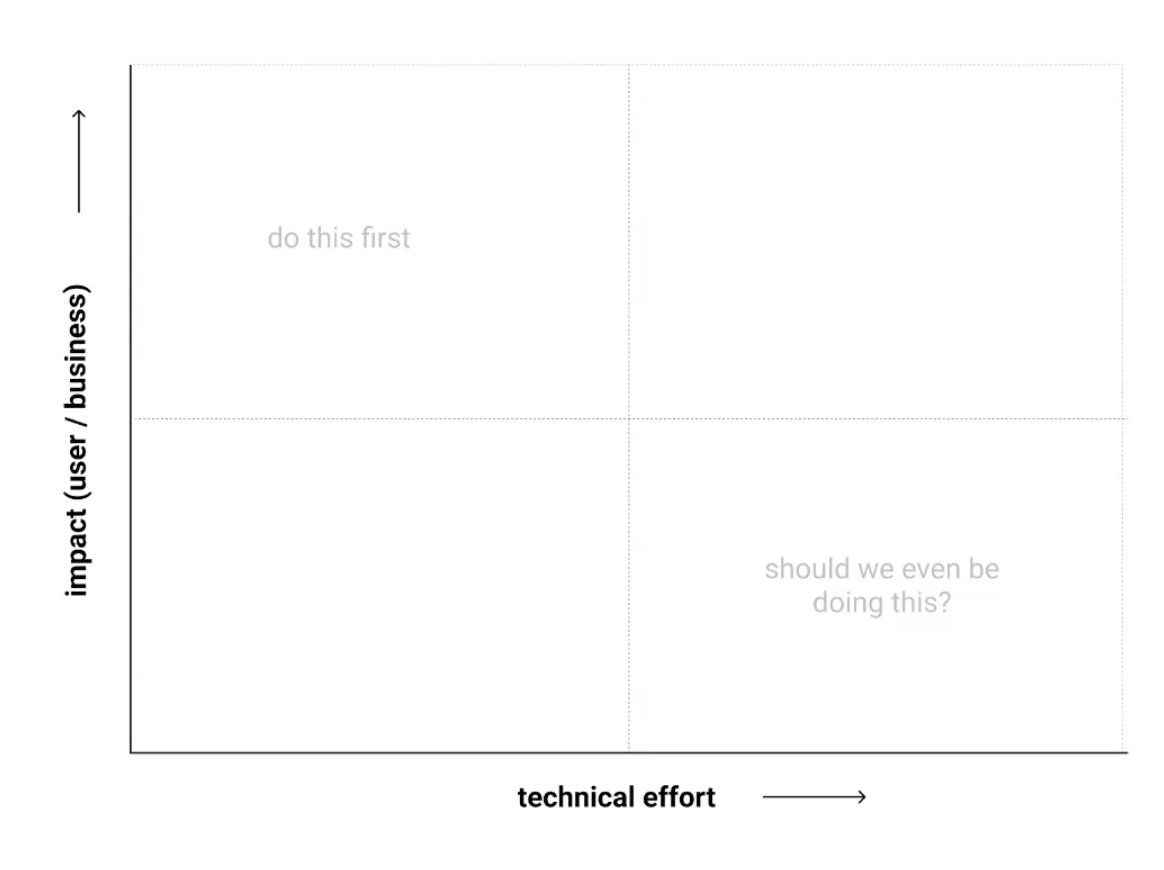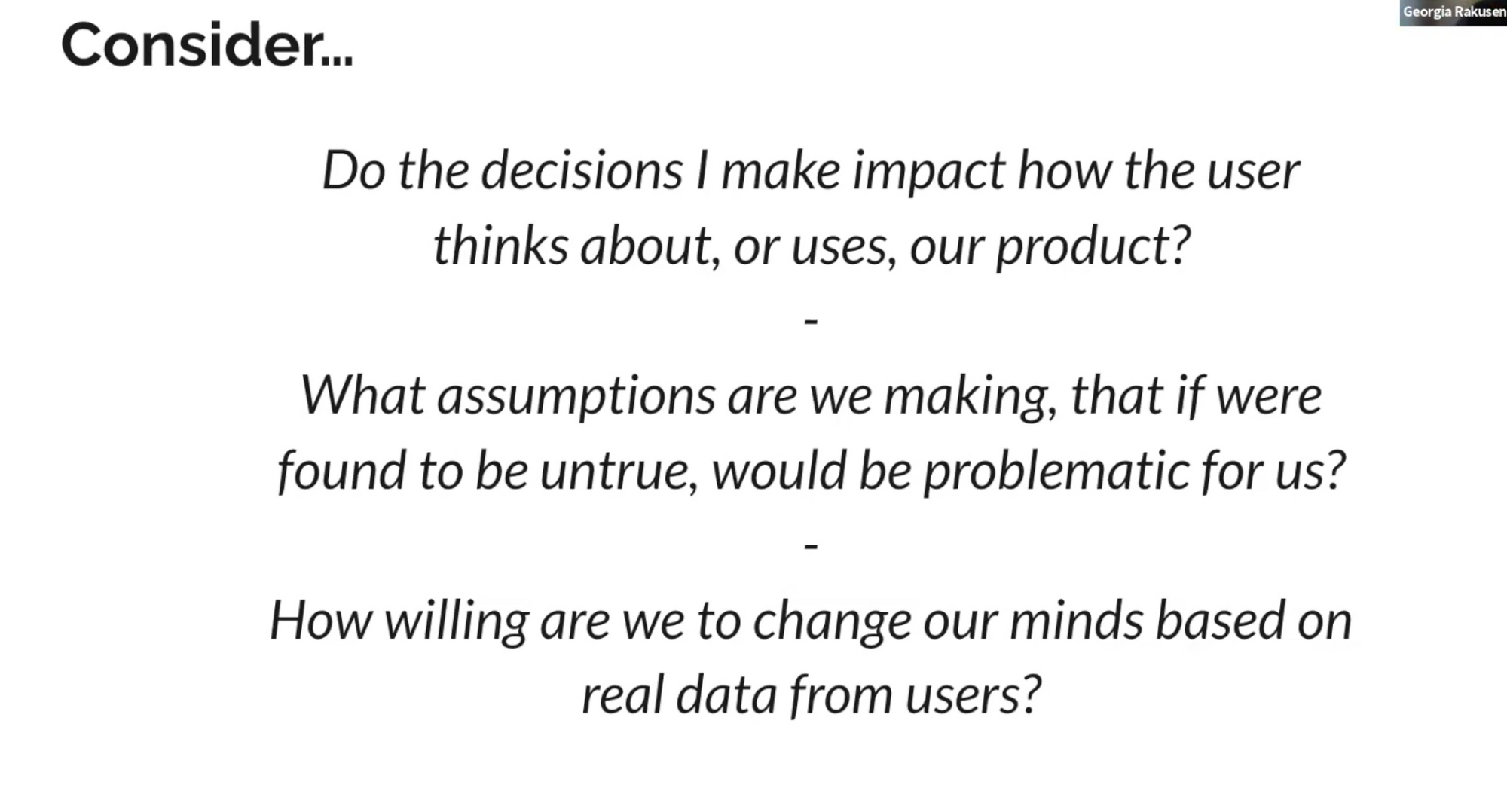AKASHA Conversations #9 — Web3 needs more UX Researchers and Designers

AKASHA Conversations is a monthly event where we explore the critical aspects of decentralized social networking. While we have focused on moderation in the first six conversations, we are now transitioning to highlighting decentralized social networks and emergent Web3 communities.
For this ninth AKASHA Conversation, we were delighted to have Georgia Rakusen join us for an inspiring discussion about the need for more UX Research in Web3. Together, we explored UX Design, the current state of UX in Web3, and some practical tactics to improve UX.
Georgia strives to place the user at the heart of decision-making for teams building the next generation of the internet. She is one of the most experienced UX researchers in the Web3 and cryptocurrency space - she is the founder of User Research DAO and cofounder of Web3 UX.
As a UX Researcher, I was looking forward to learning from Georgia’s expertise in Web3 and gaining insights on the following:
The role of UX Design & Research
- UX is more than interfaces
- User Research is about course correction
- What is good and bad user research
- Qualitative research methods and why surveys suck
The current state of UX in Web3
- Why Web3 UX is generally poor
- UX maturity is very low
- Research Themes
Tactical things we can do to improve UX now
- Adopting a researcher mindset
- Finding the right users for discussions
- What questions should we ask users
- Turn insights into actions
View the recording below! 👀
Continue reading for some deep UX wisdom! 👇
PART 1: The Role of UX Design & Research
UX is more than Interfaces
Georgia began by sharing that one of the most significant pain points of Web3 is the current state of UX within products and services. If you have used Web3 services, you have probably experienced these pain points. During the discussion, Georgia made an important distinction - UX is not UI.
“The user experience is every single touchpoint and interaction the user has with your product or service, not just about where the buttons and words are on the screen…it is about how well it resolves a real need.”
Georgia Rakusen

To improve user experiences, we must conduct validation studies and get people to test the products and services we design.
“If you are currently designing without users engagement, conversations, and testing…it is not User Experience design that is happening, it is just good guesswork, it is not grounded in real data.”
User Research is about Course Correction
To deepen our understanding, we can imagine a sailing vessel on a voyage of discovery. The Web3 service is the sailing vessel, and the UX design team is the crew. UX Research is the compass that facilitates course correction to reach the final destination amidst the stormy seas of user research. User research is about capturing changes in context, needs, and expectations to course correct and reach a safe port. The compass of user research provides the data that ensures we reach the final tropical paradise of optimized Web3 UX.

User Research: The Good and the Bad 🎭
To get our course correction right, we must adhere to good practices and not fall into the traps of flawed UX research.
The Three Points of Poor User Research:
Only reporting what people say and do.
Capturing data is excellent, but no knowledge is accumulated if no analysis takes place. Many Web3 teams do sporadic user interviews, casually inviting users for a recorded call. These teams are gathering information in a nonformalized and inefficient manner. This method inhibits the broader team from fully understanding the data and making positive changes to grow their Web3 service.
Only collecting opinions.
We must be careful when examining questions like: “Which of these projects should we partner with?” and “What feature do you like best?”
Relying on personal opinions to resolve these critical questions is dangerous. Every individual has unique opinions, and opinions are usually not rooted in objective experiences, natural behaviors, or preferences. We must find out what the user is actually doing and why they behave in a specific manner to build the right product.
Asking people to future-cast.
Future casting asks people to predict what they will do in the future. Human beings are terrible at predicting the future. Avoid asking questions like, “How much would you pay for this?” or “Would you use this in real life?”
Qualitative Methods and why Surveys Suck
Surveys are useful when the correct methodology is used. However, they are not the first method we should choose when conducting research. Georgia shared that surveys are generally an inferior user research method. Surveys have been legitimized because they have become ubiquitous in everyday life.
Writing questions may feel simple, but one must be careful because writing good survey questions is difficult. If survey questions are not created correctly, poor-quality data will result.
Instead of spending time writing surveys that may receive very few responses, Georgia invites us to reach out to five people for in-depth conversations. Deep conversations create greater understanding and empathy, thus helping researchers understand the valuable perspectives of users.

PART 2: The Current State of UX in Web3
Why Web3 UX is Generally Poor
Georgia shared her view that when Web3 projects are quickly funded, it is not conducive to creating useful, usable, or delightful products.
In the Web2 world, teams must prove they have reached some product-market fit to receive funding. After this phase of growth and development, Web2 teams may receive funding from interested investors to continue to develop their products and services.
In the Web3 world, the model has been reversed (especially with IDOs and ICOs). Small teams with little knowledge of building and shipping products may raise a significant investment round. This situation creates an environment of ease and relaxation for the development team with no pressure to create functional, usable, or competitive products. Georgia pointed out that she has met teams that work on Web3 products, and after many years, they still do not have a product-market fit (they are unsure what need they are trying to solve).
This dynamic results in the general public negatively perceiving the Web3 ecosystem. This public perception further hinders and slows the adoption of Web3 infrastructure.
UX Maturity is very Low
The crypto space is filled with talented and fresh people. However, these eager individuals do not understand what is required from UX designer and researcher roles in a Web3 company.
Unfortunately, a typical occurrence is that Web3 projects hire designers late in the development cycle, and the designers cannot conduct much-needed analytics and research to determine optimal UX strategies.
“TVL (Total Value Locked) is not an indicator of good user experience”
The last trend is that Web3 teams that conduct research often listen to the loudest voices in their communities which are often token holders. Web3 teams must be careful with those data sets because the data may not be in alignment with their target user type.
Without qualitative data from research or quantitative data from the product, analytics teams are making decisions in the dark.
Georgia warned us to avoid discarding traditional research practices within the Web2 ecosystem. Big tech has created extremely advanced research practices that can be applied to the Web3 ecosystem. Web3 teams can learn from Web2 tech titans and utilize their successful research methods.
Themes from Research 📚
Georgia shared the top four patterns and themes that emerged while researching various crypto projects.

#1 FEAR
- Everyone experiences fear at some point during their Web3 journey. They may have crypto FOMO (fear of missing out), fear of making a mistake, losing funds, being hacked, or looking incompetent. These are some of the emotional impulses driving people’s online behavior.
#2 TRUST
- Trust is essential to people - people want to trust other people. The human species is not yet in a place where we believe that technological systems are fully trustless. Therefore, we still depend on mammalian trust signals to verify if a team and project are trustworthy.
#3 COMPREHENSION
- The language, lexicon, and slang shared by the Web3 tribe have bubbled up into products and interfaces. This tribal language is dense, finance-based, and overly technical. It is entirely incomprehensible to many people. It’s vital to help people understand the product with clear and straightforward language. If people do not understand the language of the service, they will not trust it.
#4 SIMULATION
- We need more try-before-you-buy experiences, so people can have an understanding of the service before using the product. Demonstrating how the product works with a demo helps establish user expectations for the product.
PART 3: Tactics to Improve UX Now
To solve all of the problems stated above, the solution is simple; Do User Research!
Find five or more people, create a discussion guide, and make it a team sport! The researchers who will analyze the findings must be participants in the process.
Cultivate a Researcher’s Mindset
Start by channeling a bit of Sherlock Holmes! Focus that detective mindset on collecting the critical facts and evidence. Secondly, mix in some psychotherapist skills to make sure you listen carefully to what others are saying, and lastly, bring your samurai moves to observe what people do, how they do it, and why they do it. Do not allow your research biases to influence user behavior; you can gain great insight into user beliefs, behaviors, and patterns.
Remember:
- You are not the user
- Be prepared to be wrong
- Let the user be the expert of their own experience - let them explore
Finding the Right Users for Discussions 🗣️
It is crucial to find the right type of people. Consider the user experience during research; how do they feel about participating? Compensating the user for their time is one essential step that will help you gather good-quality data.
High-Quality Research Participants:
- Existing users or customers
- Profiled non-users
- Competitors customers
- Anti users/detractors
Low-Quality Research Participants:
- Fans, token holders, and people the researchers know personally.
- Experts (they tend to start sentences with, “I know what users want, but I don’t use the service”)
How to Ask Questions ⁉️
Good questions are open-ended and exploratory. Georgia’s examples:
- Tell me about the last time you…
- Then what did you do…
- How did that make you feel…
- Describe to me…
- Show me how…
- Why…
Be careful with content that includes:
- Leading or closed questions: “How important is…to you? or Would you use…?”
- Jargon
- Explaining the product
- Interrupting users
Turn Insights into Actions
Turn all the valuable research insights into actionable steps for your development team.
- Share insights with the team and ask them to think of potential actions
- As a group, come up with the top actions that can be taken from key insights
- Filter the data to understand the effort required to impact the metrics you wish to achieve on an achievable timeline. In conclusion, you’ll have an established backlog!
- Here’s an example of an Impact Matrix.

Thanks for reading until the end! Just one last thing before you go, here are three questions Georgia invites you to consider individually or with your team. ✨

Georgia’s helpful links:
AKASHA Conversation #9 Slides
User Research Discussion Guide
Don't Send that Survey
How to Ask Questions
Live UX Research
See you soon! 👋
About the AKASHA Conversations
AKASHA Conversations is a regular webinar exploring the critical questions of decentralized social networking, with expert presentations informing and inspiring open dialogue and action. To put it another way, AKASHA Conversations is designed to foster the collective design of decentralized conversation.
🙌🏽 How to get involved
We need a plurality of minds and ideas to work out how decentralized social networking should evolve. Suppose you are interested in contributing your superpowers to a community of pioneers focusing on a complex but essential challenge for the decentralized web. In that case, the AKASHA Foundation’s community is your place to be!
🗣️ Join The AKASHA Foundation’s Discourse
Discuss, join working groups and read up about the latest conversations, design, and development efforts related to designing decentralized social networking on our forum.
🚀 Join Ethereum World!
Join us on our ride into the decentralized future of online social networks on akasha.ethereum.world.
